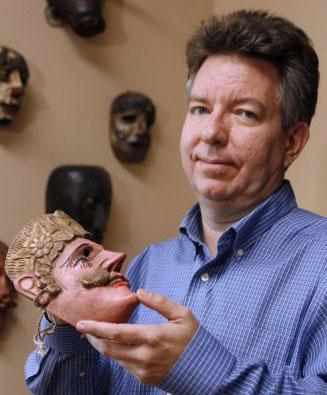PROVIDENCE, R.I. [Brown University] — An archaeological dig involving Stephen Houston, the Dupee Family Professor of Social Science and professor of anthropology at Brown University, has been awarded a National Geographic research and exploration grant to continue excavations of what may be the tomb of an ancient Maya queen.
Houston, together with project director Thomas Garrison of the University of Southern California and co-director Edwin Román-Ramírez of the University of Texas–Austin, has been conducting research at the site of Maya ruins in El Zotz, Guatemala, for several years. Houston serves as principal adviser to the dig.
In 2010, digging at the site revealed a buried temple adorned with solar and accession-related imagery and a burial dating to a period of dynastic founding and upheaval in the region known by scholars as the “Teotihuacan entrada” and dated to 378 A.D.
Later, the team unearthed a pyramid believed to celebrate the Mayan sun god.
Further excavations in 2013 revealed the likely presence of a second tomb, just in front of the first, that may contain the remains of a queen. Houston and his team will use the $20,000 in National Geographic funding to continue digging at the site to confirm the presence of its tomb and examine its role in Maya society and burial ritual.
According to Houston, “This may give us insight into the role of women in the foundation of Maya kingdoms. We hypothesize that the founder was a foreigner — a ‘stranger king,’ as anthropologists call them. If our view is correct, his spouse was a local woman he married to consolidate his hold on power.” The proposals will be tested with expert advice from Andrew Scherer, a bioarchaeologist at Brown University.

